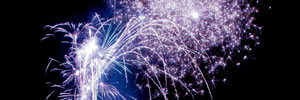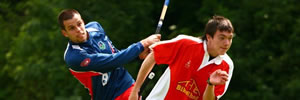
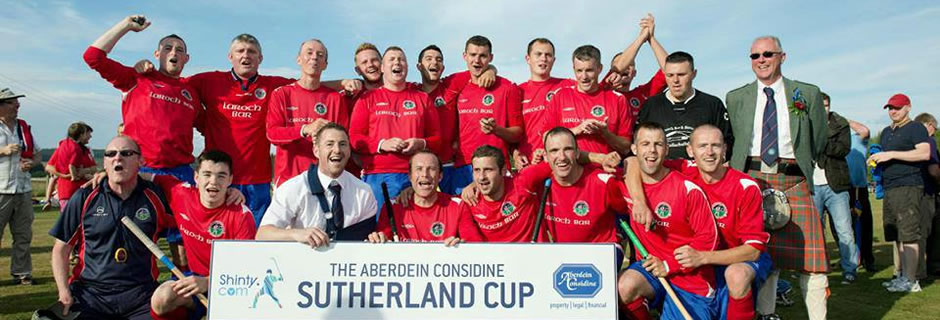
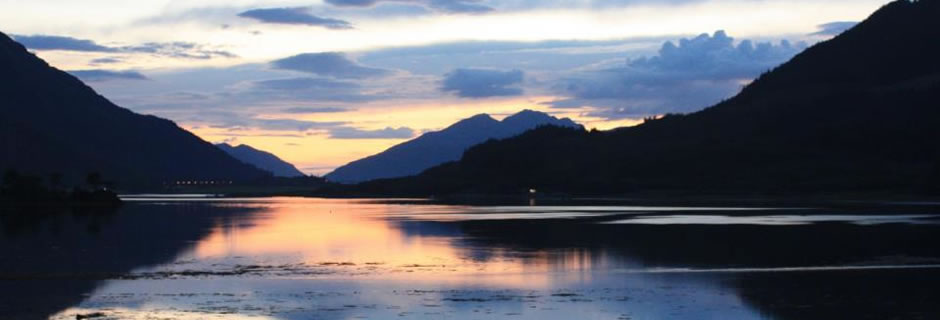
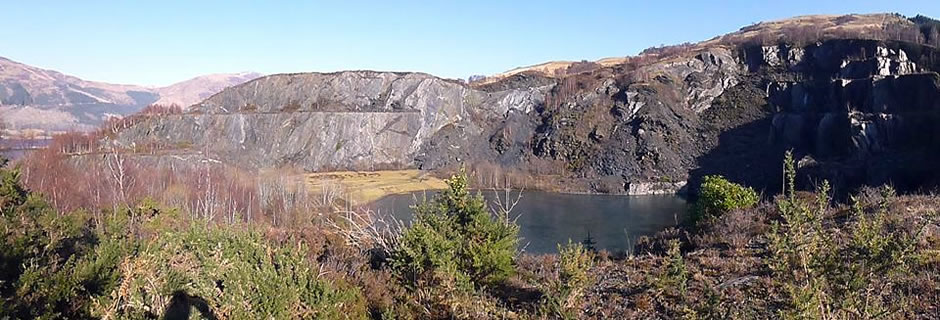
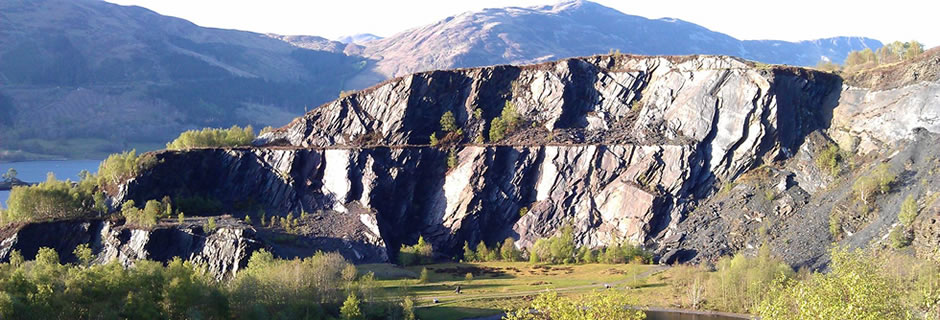
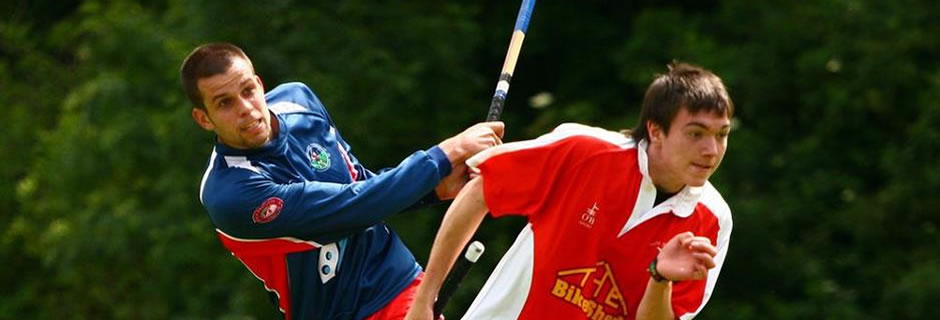
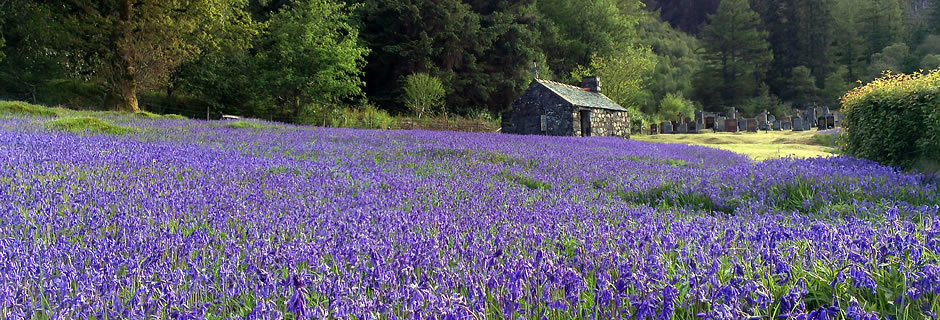
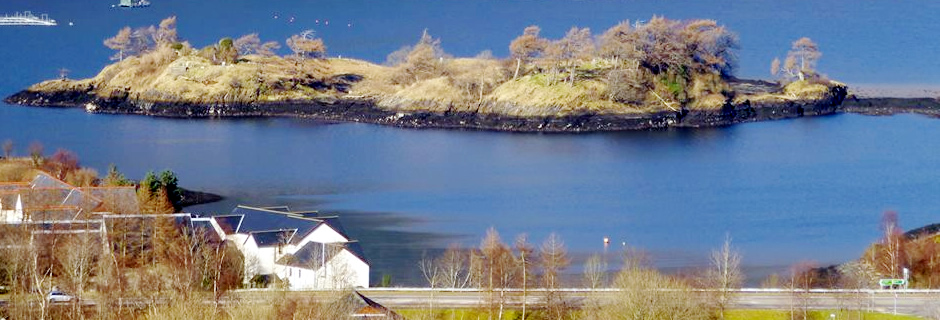
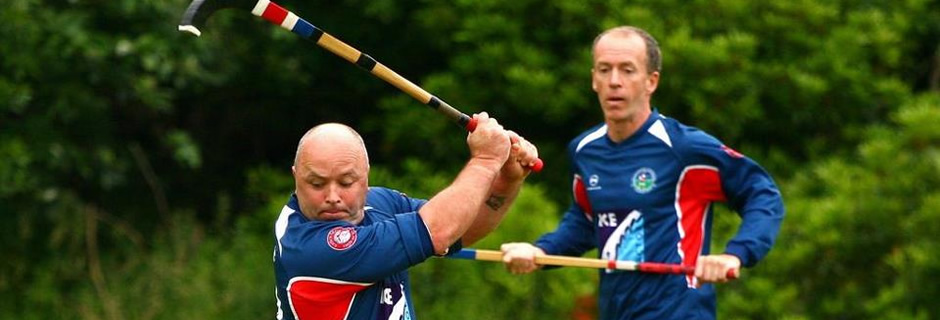
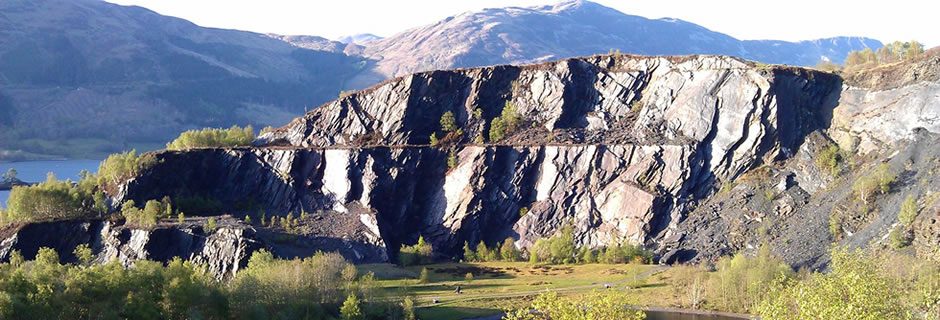








History
The history of the Ballachulish area starts a couple of miles to the west of the modern village that is known as Ballachulish. The name Ballachulish comes from the Gaelic ‘Village at the narrows’, and so it is at the narrows that the history begins.
As there was no road around Loch Leven until 1927, the Ballachulish ferry, which was established in 1733, was essential. Whilst ferry closed in December 1975 when the Ballachulish Bridge finally opened, over 2 centuries it had caused the settlements of North and South Ballachulish to grow. On both sides of the narrows, inns grew into Hotels – the Ballachulish Hotel and Loch Leven Hotel. The original estate house for Ballachulish, Ballachulish House (until recently a country house hotel) is also located near the narrows in Glenachuilish, rather than in the ‘modern’ village around two miles to the east. Ballachulish House was reputed to be haunted, and the drive leading to it was ridden by a headless horseman.
In contrast, the modern village of Ballachulish started as two or three small settlements. Brecklet, East and West Laroch. Two of these survive as road names, and East Laroch was also used as a road name until just a few decades ago. The name Ballachulish started to take over when the Quarries started back in 1693, as they were known as the Ballachulish Quarries, being on the Ballachulish Estate. Over the next 200 years, the village was known as Laroch, East Ballachulish, Ballachulish Quarry or just plain Ballachulish. However, with the coming of the railway in 1903, the last was chosen for simplicity and so the name stuck.
Ballachulish certainly made a lasting impression on Queen Victoria during a royal visit. Her diary reflects not just the slate quarrying but also the lengths the residents went to in order to decorate the village for her visit. The villagers too must have been impressed by the Queen, for 4 years later they erected a Slate memorial for her Golden Jubilee.
The hamlet of Glenachulish lies in Gleann a’ Chaolais, the glen that runs down to the narrows. Gleann a’ Chaolais is ringed by Beinn a’ Bheithir, a massif which contains two munros – Sgorr Dhearg and Sgorr Dhonuill. In recent years a number of new houses have been built locally along with holiday chalets and an art gallery. The fields of Gleann a’ Chaolais have also been turned into a 9-hole golf course, and are now home to a variety of other activities including Segway rides.
Overlooking the narrows is the monument to James of the Glen, “hanged on this spot for a crime of which he was not guilty”. Robert Louis Stevenson based his novel Kidnapped around the story of the Appin Murder. Whoever did kill the Red Fox (Campbell of Glenure) is still not known, but the story is a reminder that a people subject to unjust occupation and persecution, as the Jacobite Highlanders were, will sometimes resort to violence and rebellion.
Railway – In 1903, a branch of the Callander and Oban Railway, from Connel Ferry, was opened to Ballachulish. The site of the former railway halt of Ballachulish Ferry, the penultimate stop on the line before the Laroch quarries, was near Ballachulish House, some half mile inland from the ferry. Traces of the line, which closed in 1966, remain between here and Connel Ferry.
The old terminus station at Laroch (Ballachulish) is now an award-winning Doctor’s surgery. The station, and stationmaster’s house, at Duror, is now a private house and the station at Creagan, some 20 miles south, has been refurbished in its old traditional Caledonian Railway brown. The station at Kentallen (5 miles south of Ballachulish) included a pier.
When the Oban-Ballachulish branch line closed, the station buildings were bought over by Scottie & Bridget Stewart who ran the renowned Kentallen Station Tearooms for more than 15 years until finally retiring in 1974. Afternoon tea served here was a spectacular feast according to visitors books from the day. This station has now been turned into The Holly Tree Hotel & Leisure Club. Much of the old railway line has been re-used as part of National Cycle Route 78, once again giving the beautiful views previously seen from the train.

